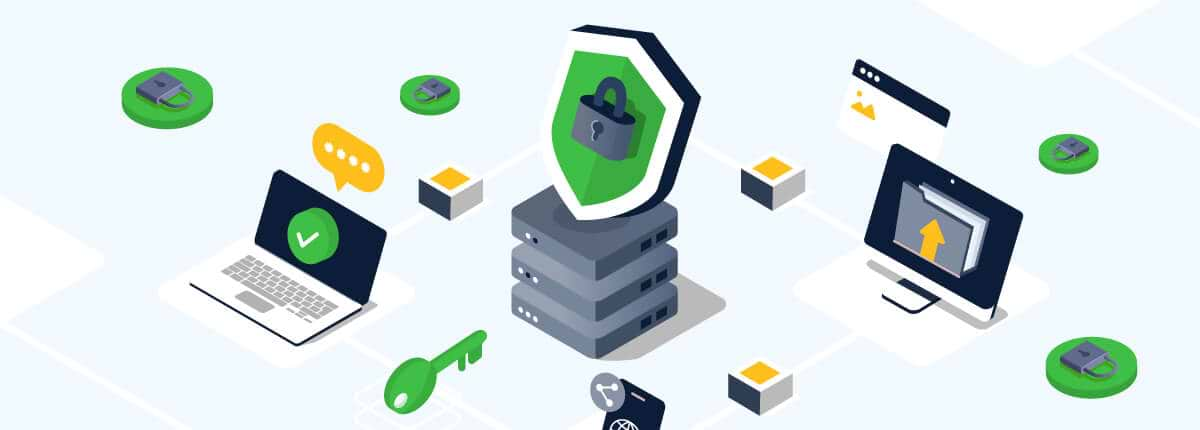Tips and Tools for Managing Application Security
Application security is one of the fundamental pillars of overall IT security. Baking security into your application architecture, code and development lifecycle is essential for establishing a strong security posture.
This article explains how to do that by identifying the tools and practices that enable strong application security.
What is application security?
Application security is the process of securing applications. It addresses the security of applications at all stages of the software development cycle — from application design and planning, to coding, to compiling and testing through to production deployment.
Thus, application security is about more than just the security of applications themselves. It deals with the security of application development pipelines, too. You can’t develop a secure application if your pipeline is not also secure.
Application security is different in most respects from other security domains, such as infrastructure security, network security and data security. One key difference is that application security focuses first and foremost on code, because problems in source code often translate to application security issues.
Code is of secondary importance in security domains where code plays a less important role in defining or managing resources. You might scan configuration code to check for vulnerabilities in your infrastructure or network, for example, but you don’t need to worry about insecure code leading to buffer overflow exploits or injection attacks in the way that you would with an application.
Why is application security important?
Application security is critically important because applications are the medium through which users typically interface with digital infrastructure and data. An insecure application could expose sensitive information from a private database to attackers, for example. Or, it could be used to alter software to perform unauthorized tasks, such as cryptomining. In addition, because applications typically play a central role in driving business operations, keeping applications secure is important for ensuring that the business can operate as required. Common application security flaws
Application security risks can come in a variety of forms, and organizations should think holistically and creatively about the risks that may affect their applications. As a starting point, however, consider the following common types of application security flaws:
- Coding flaws: Poorly designed or written source code could enable attackers to launch exploits like injection attacks, which are possible when applications don’t properly validate input before processing it. Likewise, issues with the way applications are programmed to manage memory resources could enable buffer overflow attacks.
- Configuration mistakes: Configuration errors or weaknesses, such as the opening of an insecure network port, could lead to application security breaches.
- Insecure dependencies: Applications often depend on external resources, like third-party libraries or modules. If those dependencies contain security flaws, they may be imported into the application that uses them.
- Improper secrets management: Secrets like passwords and encryption keys should be managed carefully within applications and application delivery pipelines. Mistakes like storing secrets in plaintext, where attackers can easily access them, can lead to exploits.
- Malware injection: Threat actors may leverage security gaps in the development process or infrastructure to insert malicious code or data into an application. Malware injection may happen when attackers gain access to the CI/CD environment in which an application is built; there, they can add malicious code to the codebase.
- Weak access controls: Poor controls over access to CI/CD tooling, source code repositories and container image registries may allow attackers to inject malicious code or exfiltrate data from applications.
Tools for enforcing application security
Because application security risks come in many forms, a broad set of tools is required. Following are the most important of these tools:
Application Security Testing
Application Security Testing tools detect vulnerabilities within applications. They include Software Composition Analysis (SCA) tools, such as JFrog Xray, which scan application source code or application binaries for signs of insecure dependencies, malware or other risks. They also include Static Application Security Testing (SAST), which statically analyzes applications’ source code to identify software quality and security issues, and Dynamic Application Security Testing (DAST), which detects vulnerabilities by launching simulated attacks against applications.
Secrets managers
Secrets managers can securely store passwords, encryption keys and other sensitive data, then share them with applications when necessary. In so doing, secrets managers help teams avoid application security risks associated with weak credentials management at all stages of the application development lifecycle. You can manage secrets through standalone tools, or take advantage of platforms like JFrog Pipelines, which feature built-in secrets management.
Configuration auditors
Tools that can automatically scan configuration and access control files for errors can help enforce strong application security. Although risks like these are typically associated with the way infrastructure is configured, rather than being application risks per se, problems like insecure cloud Identity and Access Control (IAM) settings can make it much easier for threat actors to exploit application security vulnerabilities.
SIEM SOAR and vulnerability management platforms
Security Incident and Event Management (SIEM) and Security Orchestration, Automation and Response (SOAR) platforms (which are sometimes also called vulnerability management platforms) collect and analyze data from across production environments to detect potential vulnerabilities or breaches. These platforms typically address security from all layers of the environment — applications, infrastructure, networks and data — and they are thus not strictly application security tools. Nonetheless, the insights from SIEM and SOAR platforms can reveal application security issues in production, enabling teams to address the risks before they are fully exploited.





